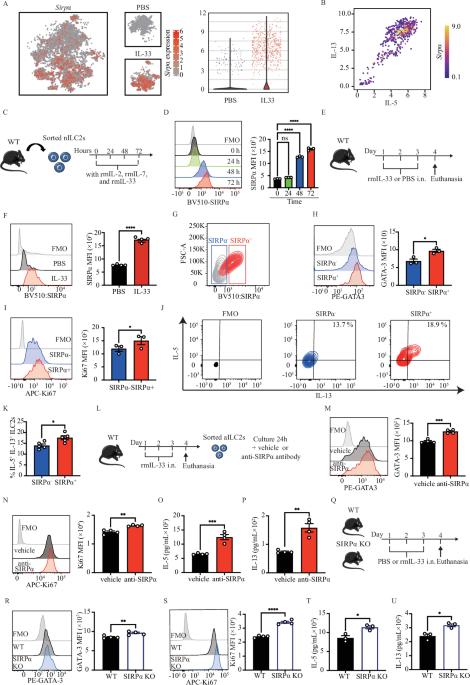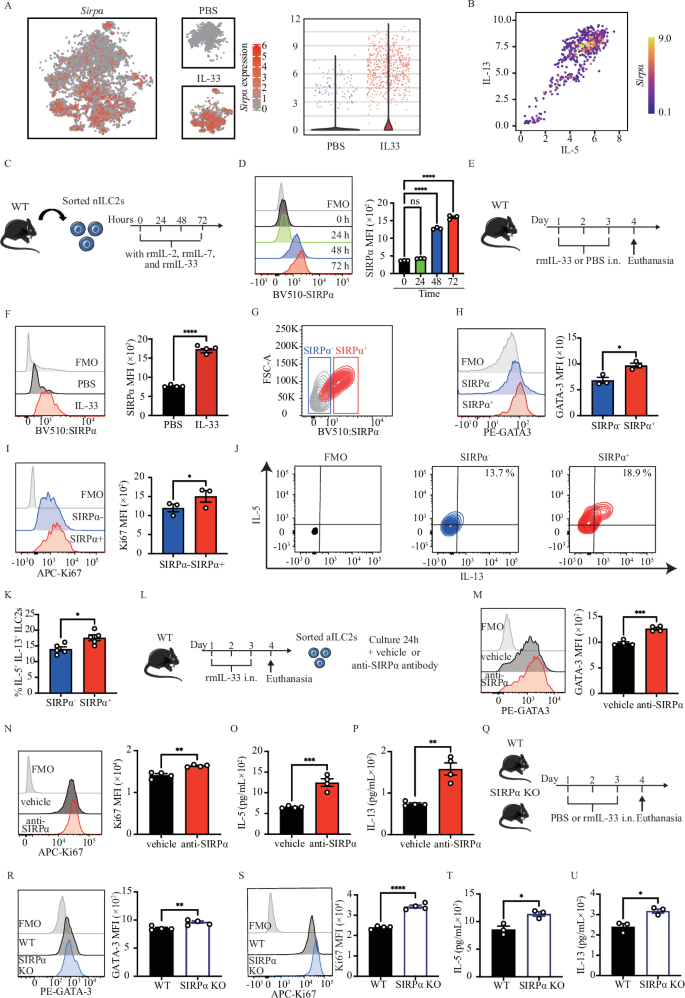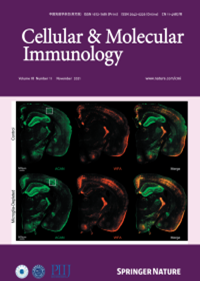SIRPα 参与调节 ILC2 效应器功能,并通过调节能量代谢缓解气道过度反应。
IF 21.8
1区 医学
Q1 IMMUNOLOGY
引用次数: 0
摘要
第 2 组先天性淋巴细胞(ILC2)是一个不断壮大的先天性淋巴细胞家族的一部分,因其在过敏性哮喘的发生和恶化中起着至关重要的作用而闻名。ILC2 的活化和功能受各种活化和抑制分子的调控,它们之间的平衡决定了过敏反应的严重程度。本研究旨在阐明与 CD47 相互作用的抑制分子信号调节蛋白α(SIRPα)在控制 ILC2 介导的气道高反应性(AHR)中的关键作用。我们的数据表明,活化的 ILC2 会上调 SIRPα 的表达,而 SIRPα 与 CD47 的相互作用能有效抑制 ILC2 的增殖和效应功能。为了评估 SIRPα 在 ILC2 介导的 AHR 中的功能,我们结合了多种方法,包括基因修饰小鼠模型和过敏原诱导 AHR 小鼠模型的收养转移实验。我们的研究结果表明,SIRPα的缺失会导致ILC2的过度激活。相反,SIRPα与CD47的接合会减少ILC2细胞因子的产生,并有效调节ILC2依赖性AHR。此外,SIRPα-CD47 轴通过 JAK/STAT 和 ERK/MAPK 信号通路调节线粒体代谢,从而调节 NF-κB 活性和 2 型细胞因子的产生。此外,我们的研究还发现,SIRPα在人ILC2上具有诱导性和表达性,服用人CD47-Fc能有效抑制其效应功能和细胞因子的产生。此外,给人源化 ILC2 小鼠注射人 CD47-Fc 能有效缓解 AHR 和肺部炎症。这些发现凸显了靶向 SIRPα-CD47 轴治疗 ILC2 依赖性过敏性哮喘的巨大潜力。本文章由计算机程序翻译,如有差异,请以英文原文为准。


SIRPα engagement regulates ILC2 effector function and alleviates airway hyperreactivity via modulating energy metabolism
Group-2 innate lymphoid cells (ILC2) are part of a growing family of innate lymphocytes known for their crucial role in both the development and exacerbation of allergic asthma. The activation and function of ILC2s are regulated by various activating and inhibitory molecules, with their balance determining the severity of allergic responses. In this study, we aim to elucidate the critical role of the suppressor molecule signal regulatory protein alpha (SIRPα), which interacts with CD47, in controlling ILC2-mediated airway hyperreactivity (AHR). Our data indicate that activated ILC2s upregulate the expression of SIRPα, and the interaction between SIRPα and CD47 effectively suppresses both ILC2 proliferation and effector function. To evaluate the function of SIRPα in ILC2-mediated AHR, we combined multiple approaches including genetically modified mouse models and adoptive transfer experiments in murine models of allergen-induced AHR. Our findings suggest that the absence of SIRPα leads to the overactivation of ILC2s. Conversely, engagement of SIRPα with CD47 reduces ILC2 cytokine production and effectively regulates ILC2-dependent AHR. Furthermore, the SIRPα-CD47 axis modulates mitochondrial metabolism through the JAK/STAT and ERK/MAPK signaling pathways, thereby regulating NF-κB activity and the production of type 2 cytokines. Additionally, our studies have revealed that SIRPα is inducible and expressed on human ILC2s, and administration of human CD47-Fc effectively suppresses the effector function and cytokine production. Moreover, administering human CD47-Fc to humanized ILC2 mice effectively alleviates AHR and lung inflammation. These findings highlight the promising therapeutic potential of targeting the SIRPα-CD47 axis in the treatment of ILC2-dependent allergic asthma.
求助全文
通过发布文献求助,成功后即可免费获取论文全文。
去求助
来源期刊
CiteScore
31.20
自引率
1.20%
发文量
903
审稿时长
1 months
期刊介绍:
Cellular & Molecular Immunology, a monthly journal from the Chinese Society of Immunology and the University of Science and Technology of China, serves as a comprehensive platform covering both basic immunology research and clinical applications. The journal publishes a variety of article types, including Articles, Review Articles, Mini Reviews, and Short Communications, focusing on diverse aspects of cellular and molecular immunology.

 求助内容:
求助内容: 应助结果提醒方式:
应助结果提醒方式:


